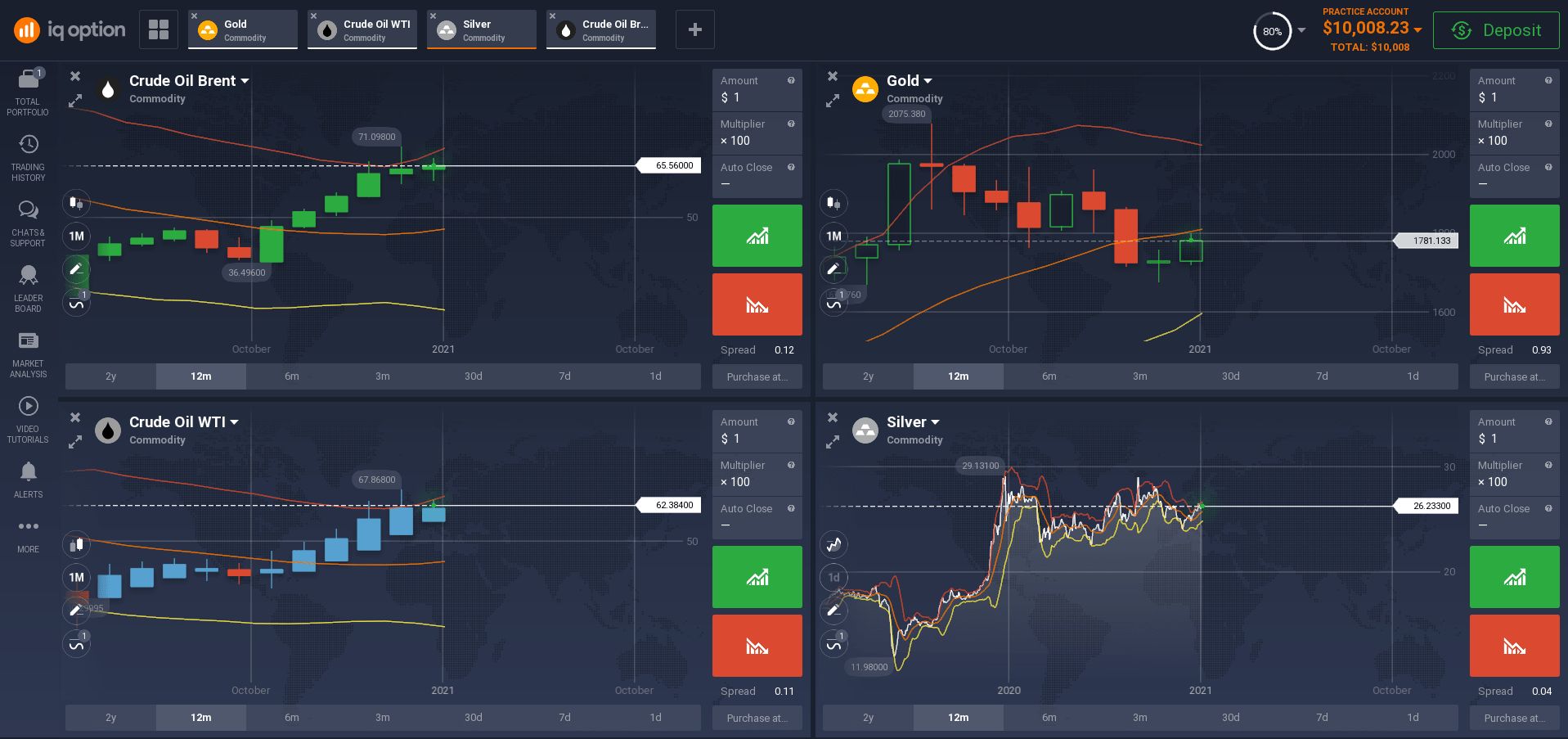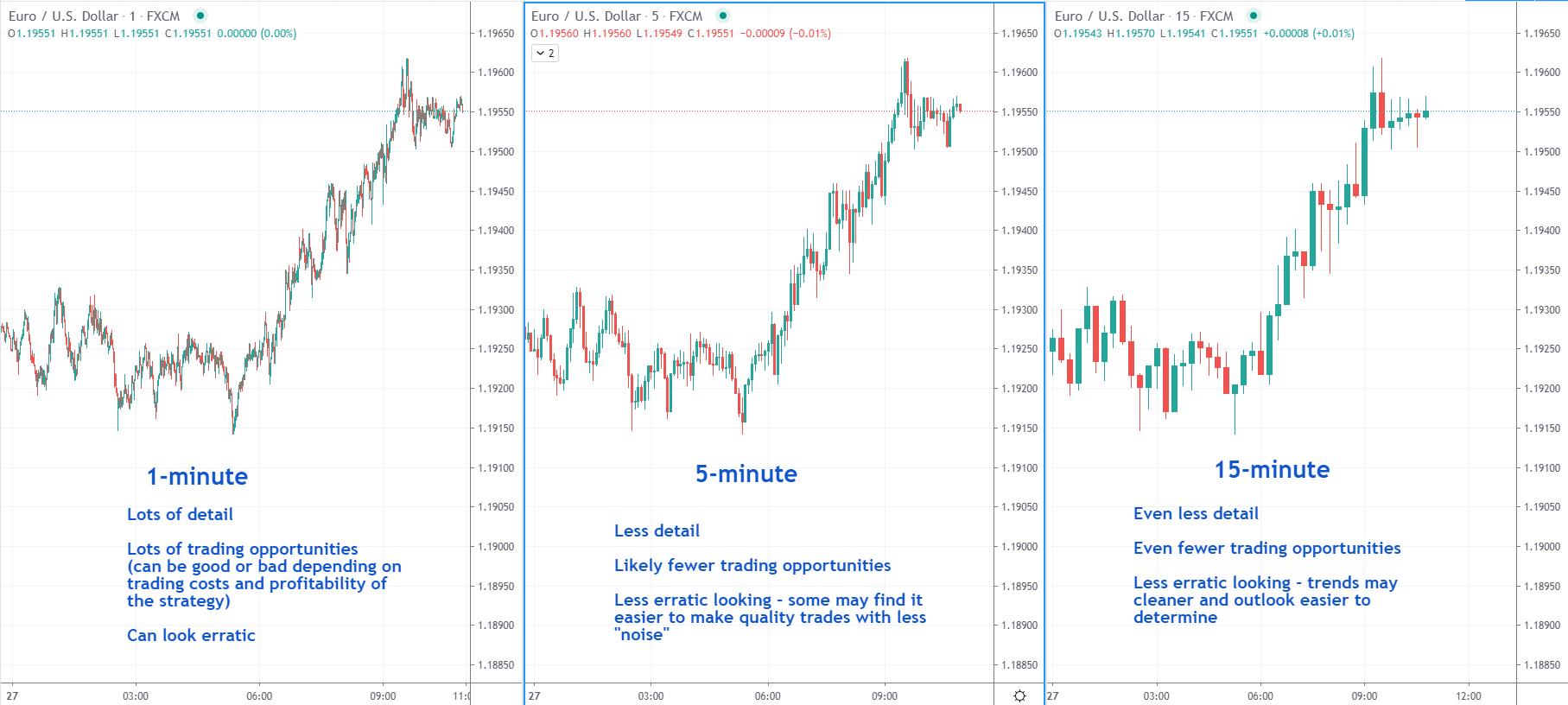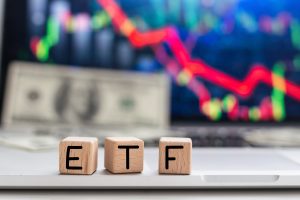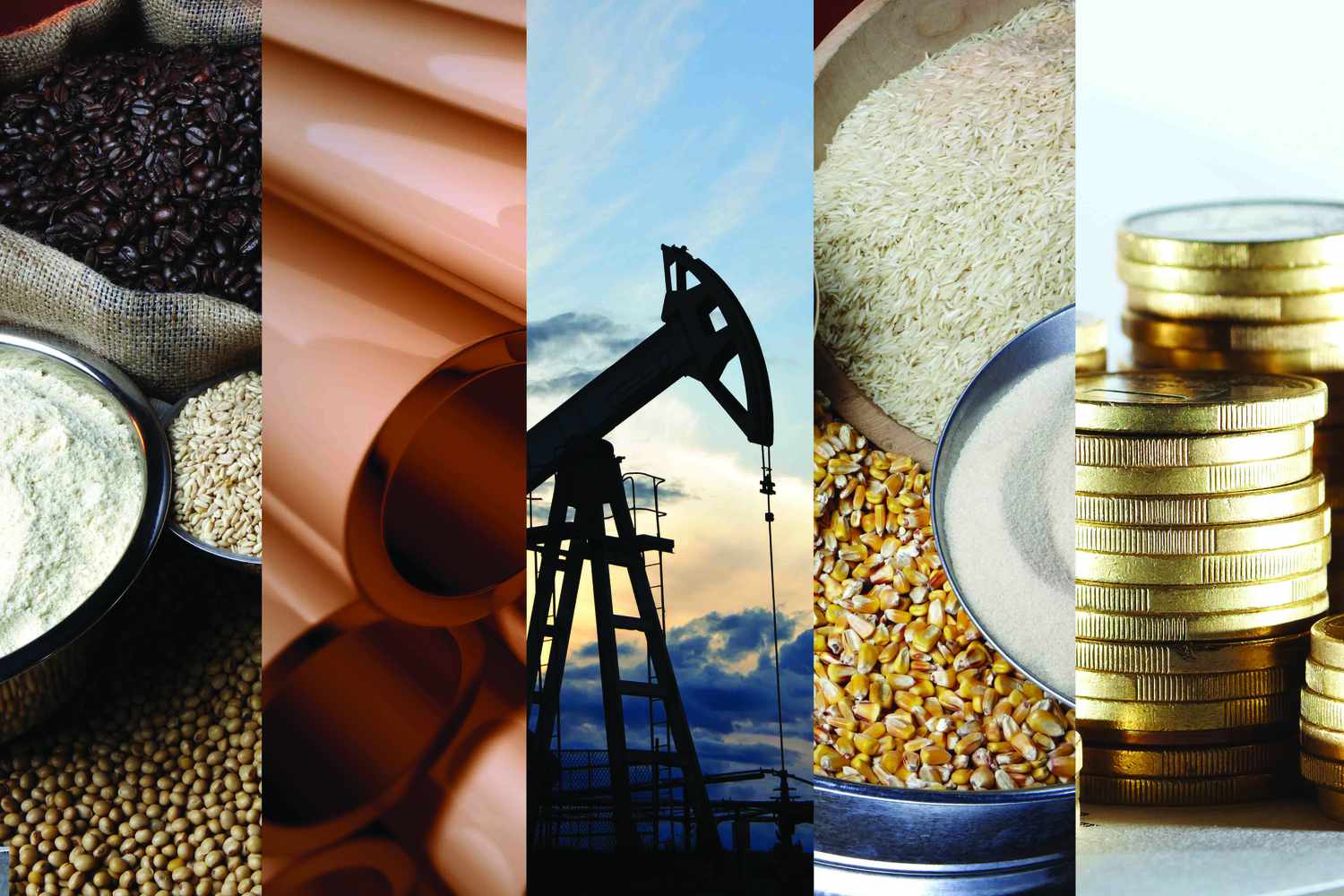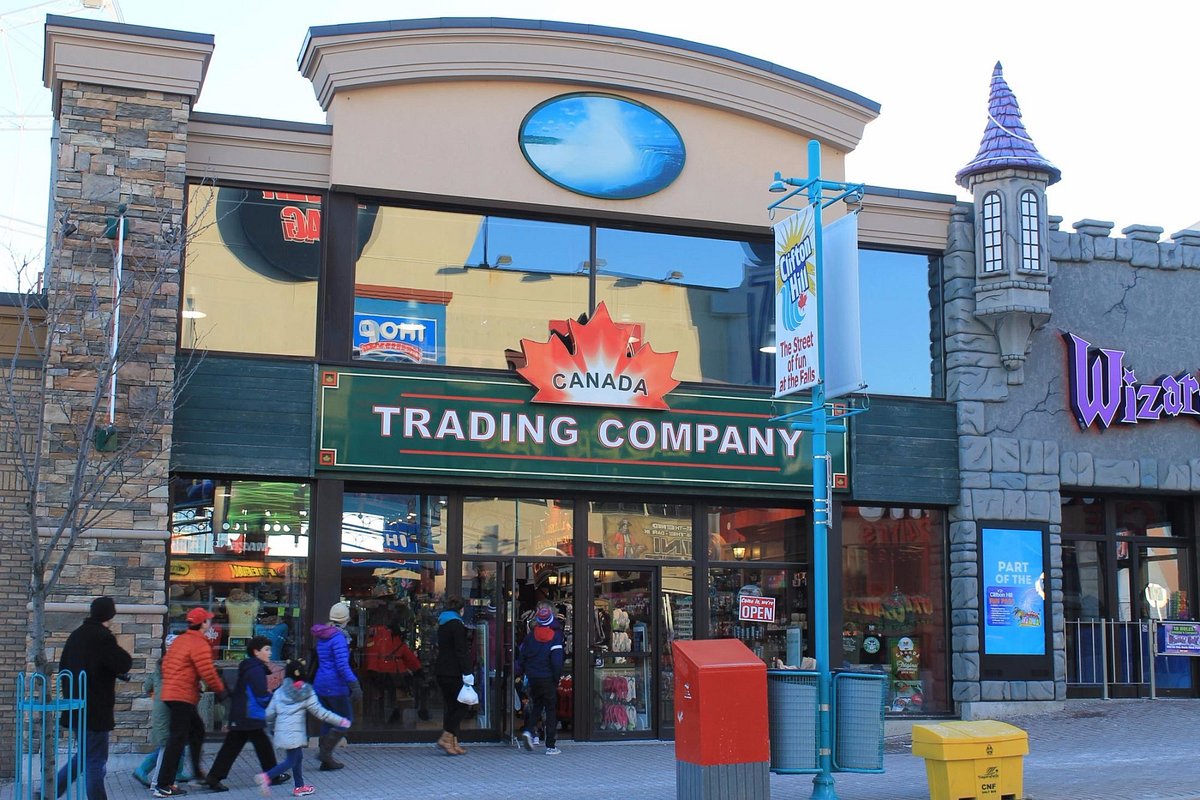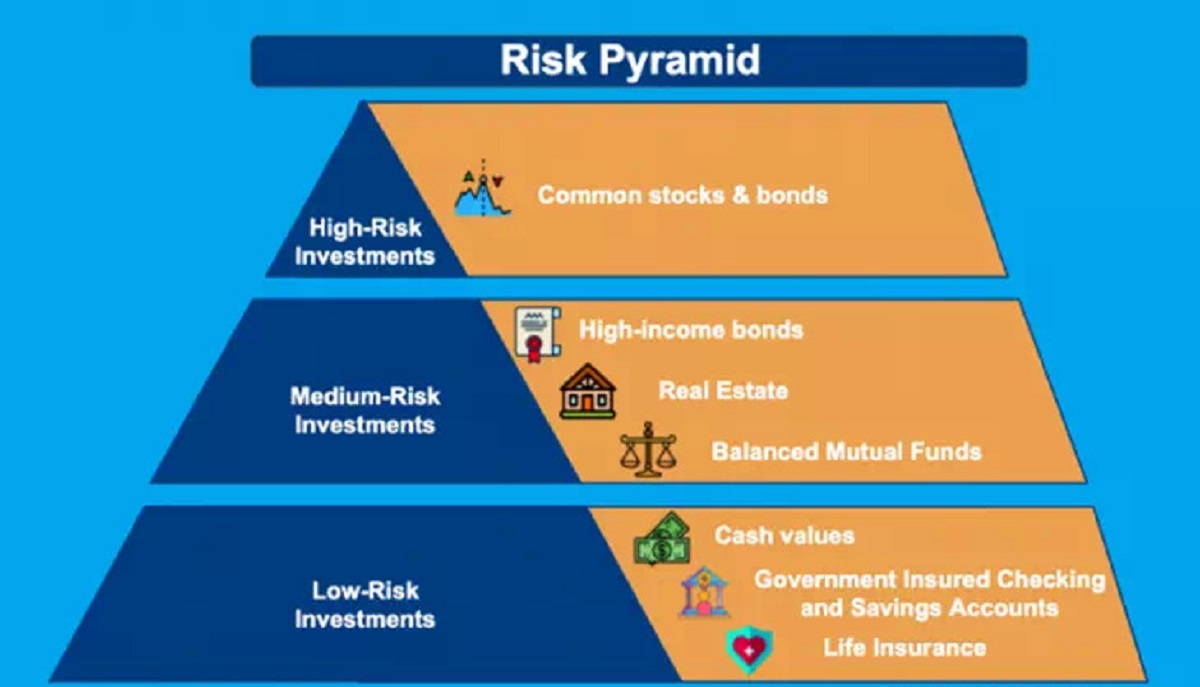Introduction
Welcome to the exciting world of commodity trading! If you are new to this field, you may be wondering what exactly commodity trading is and how you can get started. Commodity trading involves buying and selling various raw materials or primary goods, such as oil, gold, agricultural products, and more. Traders aim to profit from fluctuations in the prices of these commodities. With the potential for high returns, commodity trading has garnered the attention of investors around the world.
Commodity markets have a rich history that dates back centuries. In ancient times, traders would exchange goods directly in local markets. However, with the advent of modern technology, commodities are now traded on organized exchanges, allowing for seamless transactions on a global scale.
One of the main attractions of commodity trading is the diversification it offers. Commodities have a lower correlation with traditional asset classes like stocks and bonds, making them a valuable addition to a diversified investment portfolio. Additionally, commodity trading allows investors to hedge against inflation, as the prices of certain commodities tend to rise during times of higher inflation.
Getting started in commodity trading may seem daunting at first, but with the right knowledge and approach, it can be a rewarding endeavor. This guide will walk you through the necessary steps to begin your commodity trading journey, from understanding the commodity market to developing a trading strategy and managing risk.
Before diving into the specifics of commodity trading, it is important to choose a reliable commodity broker. A commodity broker acts as an intermediary between buyers and sellers, facilitating trades on behalf of traders. Choosing a reputable broker with a user-friendly trading platform and competitive fees is crucial for a smooth trading experience.
Whether you are a seasoned investor looking to expand your portfolio or a beginner eager to dip your toes into the world of commodity trading, this guide will provide you with the knowledge and tools to navigate the complex world of commodity markets and make informed trading decisions. So, let’s dive in and explore the exciting opportunities that commodity trading has to offer!
What is Commodity Trading?
Commodity trading refers to the buying and selling of various raw materials or primary goods, often known as commodities, in the financial markets. These commodities can range from precious metals like gold and silver to energy resources like oil and natural gas, and agricultural products such as wheat, corn, or coffee.
The main objective of commodity trading is to profit from the fluctuations in the prices of these commodities. Traders can take advantage of both rising and falling prices, using different trading strategies such as speculation, hedging, or arbitrage.
Speculation is one of the primary reasons people engage in commodity trading. Traders who speculate aim to profit from anticipated price movements. They analyze market trends, historical data, and relevant news to make informed trading decisions. Speculators typically take a short-term approach, looking for quick profits by buying low and selling high or selling high and buying low.
Hedging is another important aspect of commodity trading. It involves using commodities as a means of risk management. For instance, a wheat farmer can hedge against the risk of falling wheat prices by selling wheat futures contracts. If the price of wheat drops, the farmer will make a profit on the futures contract that offsets the losses on the actual wheat crop.
Arbitrage, on the other hand, involves taking advantage of price discrepancies in different commodity markets. Traders identify opportunities where the same commodity is priced differently in different markets and execute trades to profit from the price difference.
Commodity trading takes place on various exchanges worldwide, such as the Chicago Mercantile Exchange (CME), New York Mercantile Exchange (NYMEX), London Metal Exchange (LME), and Shanghai Futures Exchange (SHFE). These exchanges provide a centralized platform where buyers and sellers can trade standardized contracts representing specific quantities and qualities of commodities.
In recent years, commodity trading has become more accessible to individual investors, thanks to the advancement of technology and the emergence of online trading platforms. Now, traders can participate in commodity markets from the comfort of their homes or offices, using computers or mobile devices.
Commodity trading offers several advantages, including the potential for high returns, portfolio diversification, and protection against inflation. However, it’s important to note that it also carries inherent risks. Prices of commodities can be volatile, influenced by various factors such as global economic conditions, political events, weather patterns, and supply and demand dynamics.
In the following sections, we will delve deeper into understanding the commodity market, choosing the right commodity broker, setting up a trading account, analyzing and researching commodities, developing a trading strategy, placing trades, managing risk, and monitoring trades. By the end of this guide, you will have a solid foundation to embark on your commodity trading journey with confidence and knowledge.
Understanding the Commodity Market
The commodity market is a complex and dynamic arena where various raw materials or primary goods are bought and sold. It is essential to have a thorough understanding of how the commodity market operates before engaging in commodity trading.
One of the key elements of the commodity market is the concept of supply and demand. Factors such as global economic conditions, geopolitical events, climate patterns, and technological advancements can impact the supply and demand dynamics for different commodities.
Supply refers to the quantity of a specific commodity available for sale in the market. It depends on factors such as production levels, weather conditions, transportation infrastructure, and government policies. For example, if there is a successful harvest of corn, the supply of corn in the market will increase.
Demand, on the other hand, is the quantity of a particular commodity that buyers are willing and able to purchase at a given price. Demand is influenced by factors such as population growth, consumer preferences, industrial demand, and economic conditions. For instance, if there is a surge in industrial production, the demand for oil and other energy commodities is likely to increase.
The interaction between supply and demand determines the price of commodities. When supply exceeds demand, prices may decrease, while a shortage of supply relative to demand can cause prices to increase.
In addition to supply and demand, commodity prices can be influenced by various other factors. Economic indicators, such as gross domestic product (GDP) growth, inflation rates, and interest rates, can impact commodity prices indirectly. For example, if the economy is growing rapidly, there is typically higher demand for commodities to support infrastructure development and manufacturing activities.
Weather conditions play a significant role in commodity markets, especially for agricultural commodities. Droughts, floods, or extreme weather events can affect crop yields and, consequently, crop prices. Similarly, natural disasters or geopolitical tensions in regions rich in natural resources can impact the prices of energy commodities.
Government policies and regulations can also influence commodity prices. For instance, export restrictions or import tariffs implemented by governments can affect the supply and demand dynamics of commodities on the global market. Additionally, monetary and fiscal policies implemented by central banks and governments can impact the purchasing power of consumers and businesses, thereby affecting commodity prices.
Understanding the various factors that drive commodity prices is crucial for effective trading. Traders need to analyze market trends, monitor economic indicators, and stay informed about global events that may impact commodities. By keeping abreast of market developments, traders can identify potential trading opportunities and make informed decisions.
In the next section, we will discuss how to choose the right commodity broker, an important step in your commodity trading journey. A reliable and reputable broker will provide access to the commodity markets, offer competitive fees, and provide a user-friendly trading platform to execute trades.
Choosing the Right Commodity Broker
Choosing the right commodity broker is a crucial step in starting your commodity trading journey. A commodity broker acts as an intermediary between traders (buyers and sellers) and the commodity exchanges. They facilitate the execution of trades and provide access to a wide range of commodities and market information.
Here are some factors to consider when selecting a commodity broker:
- Reputation and Reliability: It is important to choose a broker with a strong reputation and a track record of reliability. Look for brokers that are properly licensed and regulated by reputable financial authorities. Additionally, consider the broker’s history and whether they have any negative reviews or disciplinary actions against them.
- Trading Platform: A user-friendly and technologically advanced trading platform is essential for seamless trading. The platform should provide real-time market data, charting tools, order placement options, and transparency in trading fees. Test out demo accounts or take advantage of free trials to evaluate the platform’s features and capabilities.
- Commodity Offerings: Different brokers offer varying ranges of commodities for trading. Ensure that the broker you choose provides access to the specific commodities you are interested in trading. This could include energy commodities, agricultural products, metals, or other commodities.
- Execution Speed and Reliability: Timely execution of trades is crucial in commodity trading, as prices can change rapidly. Look for a broker with a reputation for fast and reliable order execution, minimal slippage, and minimal downtime.
- Commissions and Fees: Commodity brokers charge various fees for their services, including commissions, spreads, account maintenance fees, and inactivity fees. Compare the fee structures of different brokers and consider the impact these fees may have on your trading profitability.
- Customer Support: Adequate customer support is important in case you have any questions or face any issues while trading. Check if the broker provides multiple channels of customer support, such as phone, email, or live chat, and whether they offer timely and helpful responses to inquiries.
- Educational Resources: Consider whether the broker provides educational resources, such as trading guides, webinars, tutorials, or market analysis, to help traders enhance their knowledge and skills in commodity trading.
It is recommended to compare multiple brokers based on these factors and consider your individual trading needs and preferences. Reading reviews and seeking recommendations from other traders can also provide valuable insights into the broker’s reputation and quality of services.
Opening a trading account with a commodity broker usually involves completing an application form, providing identification documents, and funding the account. Ensure that the broker’s account opening process is straightforward and convenient for you.
Remember, choosing a reputable and reliable commodity broker is crucial for a successful trading experience. Take the time to research and evaluate different brokers to find the one that best meets your needs and aligns with your trading goals.
In the next section, we will discuss how to set up a trading account, which is the next step in getting started with commodity trading.
Setting Up a Trading Account
Setting up a trading account is a crucial step in getting started with commodity trading. This account will serve as your gateway to the commodity markets, allowing you to execute trades and monitor your portfolio. Here are the key steps to follow when setting up a trading account:
- Choose a Commodity Broker: As discussed in the previous section, selecting the right commodity broker is essential. Consider the factors mentioned, such as reputation, reliability, trading platform, commissions and fees, and customer support. Open an account with the broker that best suits your needs and preferences.
- Complete the Application: Once you have chosen a broker, you will need to complete their account application process. This typically involves providing personal information and agreeing to the terms and conditions. You may also need to submit identification documents, such as a passport or driver’s license, to verify your identity.
- Fund Your Account: After your account application is approved, you will need to fund your trading account. Most brokers offer multiple funding options, including bank transfers, credit/debit cards, and electronic payment methods. Choose the option that is most convenient for you and ensure you meet any minimum deposit requirements.
- Understand Account Types: Commodity brokers may offer different types of trading accounts, such as individual accounts, joint accounts, or corporate accounts. Understand the account types available and choose the one that aligns with your trading needs and legal requirements.
- Read Terms and Conditions: It is important to carefully read and understand the terms and conditions of your trading account. This includes details about trading fees, margin requirements, account maintenance, withdrawal policies, and any other important information. Clarify any doubts with the broker’s customer support if needed.
- Set Up Trading Platform: Upon account approval, you will typically receive login credentials to access the broker’s trading platform. Download and install the platform on your computer or mobile device. Familiarize yourself with its features and functionality. Some brokers also offer web-based platforms that don’t require any download.
- Practice on Demo Account: Before risking real money, take advantage of a demo account if your broker offers one. A demo account allows you to practice trading in a simulated environment with virtual funds. This helps you become familiar with the trading platform, test your strategies, and gain confidence before trading with real money.
- Develop a Trading Plan: It is essential to have a trading plan in place before executing any trades. Define your goals, risk tolerance, and trading strategy. Determine the types of commodities you want to trade, the timeframes you will focus on, and the criteria for entering and exiting trades. A well-thought-out trading plan helps to maintain discipline and manage risk.
- Start Trading: Once your account is set up and you have practiced on a demo account, you can start trading with real money. Carefully analyze market conditions, utilize the tools and resources provided by your broker, and execute trades based on your trading plan. Remember to stay disciplined, manage risks, and continuously seek to improve your trading skills.
Setting up a trading account is an important initial step in your commodity trading journey. Take the time to choose a reputable broker, understand the account terms and conditions, and develop a trading plan. With these preparations in place, you will be well on your way to actively participating in the exciting realm of commodity trading.
In the next section, we will explore the crucial aspect of analyzing and researching commodities to make informed trading decisions.
Analyzing and Researching Commodities
When it comes to commodity trading, analyzing and researching commodities is a key component for making informed trading decisions. Understanding the factors that influence commodity prices and staying updated on market trends is crucial for successful trading. Here are some approaches and tools to consider when analyzing and researching commodities:
- Supply and Demand Analysis: Start by analyzing the supply and demand dynamics for the specific commodity you are interested in trading. Research factors such as production levels, consumption trends, import/export data, and government policies that may impact the supply and demand balance. Assessing the global and regional supply chains can provide valuable insights into price movements.
- Technical Analysis: Technical analysis involves studying historical price patterns, chart patterns, and trading volumes to identify potential trading opportunities. Utilize various technical indicators, such as moving averages, trendlines, and oscillators, to analyze price trends and identify entry and exit points. Many trading platforms provide built-in technical analysis tools to assist with this process.
- Fundamental Analysis: Fundamental analysis focuses on evaluating the underlying factors that drive commodity prices, such as economic indicators, geopolitical events, and weather patterns. Stay informed about relevant news and developments that may impact commodities. For example, for agricultural commodities, keep an eye on weather forecasts and crop reports. Economic indicators like GDP growth and inflation rates can also provide insights into the demand for certain commodities.
- Market Research and Reports: Stay updated with market research reports and analysis from reputable sources. These reports often provide insights into market trends, price forecasts, and expert opinions. Pay attention to commodity-specific reports and studies that delve into the factors affecting a particular commodity market.
- Commodity Exchanges and Contracts: Familiarize yourself with the specific commodity exchanges and contracts available for trading. Each exchange may have different contract specifications, trading hours, and delivery requirements. Understand the fundamental factors that influence the prices of these contracts and the impact they may have on your trading decisions.
- Seasonal and Cyclical Patterns: Commodities are often influenced by seasonal and cyclical patterns. For example, the demand for heating oil tends to rise during the winter months, while the demand for agricultural commodities may be impacted by planting and harvest seasons. Analyze historical price data to identify recurring patterns and use them to inform your trading decisions.
- Correlation Analysis: Consider the correlation between different commodities or between commodities and other financial instruments. Understanding the relationship between commodities can help diversify your portfolio and hedge against risk. For instance, certain commodities like gold and oil may have an inverse correlation with the stock market.
Remember, analyzing and researching commodities requires ongoing effort and staying updated with the latest market developments. It is important to have a well-rounded approach that combines different analysis techniques and takes into account both technical and fundamental factors.
By conducting thorough analysis and research, you can identify trading opportunities, make informed decisions, and manage risk effectively. Developing a systematic approach to analyzing commodities will enhance your trading skills and increase your chances of success in the dynamic world of commodity trading.
In the next section, we will explore the process of developing a trading strategy, which will help guide your decision-making in commodity trading.
Developing a Trading Strategy
A well-defined trading strategy is essential for achieving success in commodity trading. A trading strategy outlines your approach to entering and exiting trades, managing risk, and maximizing potential profits. By developing a solid trading strategy, you can navigate the challenges of commodity markets with confidence. Here are some key steps to consider when developing a trading strategy:
- Define Your Goals: Start by setting clear trading goals. Determine what you aim to achieve through commodity trading, whether it’s capital growth, income generation, or diversification of your investment portfolio. Having well-defined goals will help you align your trading decisions and actions.
- Identify Your Risk Tolerance: Assess your risk tolerance level, as it will influence your trading approach. Determine how much capital you are willing to risk in each trade, and establish an acceptable loss limit. This will help you manage your risk effectively and avoid emotional decision-making.
- Choose Your Trading Style: Next, determine your preferred trading style. Are you more inclined towards active day trading, swing trading, or long-term position trading? Each trading style has its own merits and requires a different set of skills and strategies. Consider your personality, time commitment, and availability when choosing your trading style.
- Establish Entry and Exit Criteria: Define clear criteria for entering and exiting trades. This can be based on technical indicators, such as moving averages or support and resistance levels, or fundamental factors, such as significant news events or economic data releases. Having specific criteria will help you make objective trading decisions and avoid impulsive actions.
- Money Management: Develop a robust money management plan that outlines how you will allocate your capital in each trade. Determine your position sizing, including the number of contracts or shares you will trade based on your risk tolerance and account size. Apply proper risk-reward ratios to ensure your potential profits outweigh potential losses.
- Backtesting and Analysis: Before implementing your trading strategy, backtest it using historical price data to assess its effectiveness. Analyze past trades using your defined entry and exit criteria to evaluate the strategy’s performance. Make adjustments as necessary and ensure the strategy aligns with your trading goals and risk tolerance.
- Keep a Trading Journal: Maintain a trading journal to track your trades, including entry and exit points, reasons for the trades, and any lessons learned. Reviewing past trades will help you identify strengths, weaknesses, and areas for improvement. Additionally, track your emotions during trades to stay aware of any biases or psychological tendencies that may affect your trading decisions.
- Continuously Educate Yourself: Commodity markets are constantly evolving, so it’s important to stay updated with the latest market trends and trading strategies. Attend webinars, read books and articles, and follow reputable traders or market analysts to enhance your knowledge and skillset. Continuously educate yourself to adapt to changing market conditions.
Remember, developing a trading strategy is an ongoing process. Monitor your strategy’s performance, make necessary adjustments based on market conditions, and refine your skills through continuous learning. Stay disciplined, stick to your strategy, and avoid making impulsive decisions based on emotions.
Developing a trading strategy tailored to your goals and risk tolerance will provide a solid foundation for your commodity trading journey. It will help you navigate the complexities of the market with confidence, increase your chances of success, and ultimately achieve your trading objectives.
In the next section, we will discuss the process of placing a trade, allowing you to execute your developed trading strategy in the commodity market.
Placing a Trade
Placing a trade is the next step in executing your developed trading strategy in the commodity market. It is the process of buying or selling commodities based on your analysis and trading plan. Here are the key steps to follow when placing a trade:
- Market Analysis: Before placing a trade, conduct a thorough analysis of the commodity market. Review your trading strategy, analyze the specific commodity you wish to trade, and assess the market conditions. Consider both technical and fundamental factors to make an informed decision about entering a trade.
- Determine Trade Parameters: Once you have completed your analysis, determine the specific parameters for your trade. This includes the commodity to trade, the contract month or expiration date, the number of contracts or shares to buy or sell, and the desired entry and exit prices. Set clear criteria based on your trading strategy.
- Select Order Type: Choose the appropriate order type based on your trading plan. Common order types include market orders, limit orders, and stop orders. A market order is executed immediately at the best available price, while a limit order is set at a specific price or better. A stop order is triggered when the market reaches a specific price, activating the buy or sell order.
- Enter the Trade: Use the trading platform provided by your commodity broker to enter the trade. Input your trade parameters, including the commodity, contract details, order type, and quantity. Double-check the information to ensure accuracy before submitting the order.
- Monitor the Trade: After placing the trade, closely monitor its progress. Keep an eye on price movements, news events, and any other factors that may impact the commodity’s price. Use the tools and resources provided by your broker to track the trade’s performance and make necessary adjustments if required.
- Manage Your Risk: Implement risk management techniques throughout the trade. Set stop-loss orders to limit potential losses and consider implementing trailing stops to secure profits as the trade moves in your favor. Regularly assess the trade’s risk-reward ratio and adjust your approach accordingly.
- Review and Learn: Once the trade is complete, review its outcome. Analyze the trade’s performance relative to your trading plan. Assess what worked well and identify areas for improvement. Keeping a trading journal can help you track and analyze your trades, enabling you to refine your strategy and enhance your trading skills.
- Execute Exit Strategy: Based on your trading plan, execute your exit strategy when the trade reaches your predetermined exit criteria. This may be a specific price target, a trailing stop order that captures profits, or other indicators outlined in your trading plan. Exiting a trade is as important as entering it, as it determines your overall profitability.
Placing a trade requires a combination of technical skill, discipline, and the ability to make objective decisions based on market analysis. It’s important to follow your trading plan and not let emotions drive your actions. Stick to your predefined parameters and manage your risk effectively.
Remember, not every trade will be a winner. It’s essential to approach trading with a long-term perspective, focusing on consistent profitability over a series of trades rather than seeking immediate gains. Regularly assess and adjust your trading strategy based on market conditions and your own learning experiences.
In the next section, we will discuss the importance of managing risk in commodity trading and how to implement effective risk management techniques.
Managing Risk in Commodity Trading
Managing risk is a crucial aspect of commodity trading. The volatile nature of commodity markets means that there are inherent risks involved in trading commodities. Effective risk management strategies are essential for preserving capital and achieving long-term success. Here are some key principles to keep in mind when it comes to managing risk in commodity trading:
- Understand Risk-Reward Ratio: Before entering a trade, assess the potential risk and reward associated with the trade. Consider the risk-reward ratio, which compares the amount of potential profit against the potential loss. Aim for a favorable risk-reward ratio, where the potential reward is greater than the potential risk. This helps ensure that even if not all trades are winners, profitable trades outweigh losing trades.
- Set Stop-Loss Orders: Implementing stop-loss orders is a fundamental risk management technique. A stop-loss order specifies a price at which you are willing to exit the trade to limit potential losses. By setting a predetermined exit point, you can protect capital and prevent significant losses. Adjust the stop-loss level as the trade progresses to lock in profits and minimize risk.
- Diversify Your Portfolio: Diversification is an important risk management strategy in commodity trading. By spreading your capital across different commodities and asset classes, you reduce the impact of adverse price movements in any one commodity. Diversification helps minimize risk and potential losses by not relying heavily on a single commodity.
- Use Proper Position Sizing: Properly sizing your positions is crucial for managing risk. Determine the appropriate position size based on your risk tolerance, account size, and the specific trade’s risk level. Avoid putting too much capital into a single trade, as this can lead to excessive losses if the trade goes against you. Consider using position sizing techniques, such as the fixed fractional method, to allocate a percentage of your account size to each trade.
- Use Trailing Stops: Trailing stops can be an effective tool for managing risk and protecting profits. A trailing stop order adjusts the stop-loss level as the trade moves in your favor, allowing you to capture and secure profits. Trailing stops help you protect gains and limit potential losses by maintaining a dynamic exit point based on the market’s movement.
- Continuously Monitor and Adjust: Risk management is an ongoing process. Regularly monitor your trades, reassess risk-reward ratios, and adjust your stop-loss levels or exit strategies accordingly. Stay updated with market conditions and news events that can impact commodity prices. Be proactive in managing your positions to adapt to changing market dynamics.
- Control Your Emotions: Emotions can cloud judgment and lead to impulsive decisions. Fear and greed are common emotional drivers in trading. Emotionally driven trading decisions can undermine risk management strategies and lead to larger losses. Stay disciplined, stick to your trading plan, and avoid making impulsive decisions based on emotions.
- Keep Adequate Capital: Ensure that you have sufficient capital to withstand potential losses and trade without excessive financial stress. Avoid risking too much capital in one trade, as this can lead to significant losses and impact your ability to continue trading. Having adequate capital provides a buffer against losses and allows you to manage risk effectively.
Remember, managing risk is an integral part of successful commodity trading. By implementing effective risk management techniques, you protect your trading capital, reduce potential losses, and increase the likelihood of long-term profitability.
In the next section, we will discuss the importance of monitoring and reviewing trades, as well as maintaining a proactive approach to fine-tune your trading strategy.
Monitoring and Reviewing Trades
Monitoring and reviewing your trades is a critical aspect of commodity trading. By keeping a close eye on your trades and regularly reviewing their performance, you can make necessary adjustments and refine your trading strategy. Here are key steps to consider when monitoring and reviewing your trades:
- Stay Updated with Market Conditions: Continuously monitor market conditions and stay informed about factors that may impact commodity prices. Follow relevant news, economic indicators, and geopolitical events that can influence your trades. Being aware of market developments allows you to make timely decisions and adjust your trading strategy accordingly.
- Track Trade Progress: Monitor the progress of your trades regularly. Keep an eye on price movements, trading volumes, and any notable events or patterns that may affect your trades. Utilize the tools and resources provided by your broker, such as trading platforms and price charts, to track trade performance in real-time.
- Assess Trade Performance: Regularly assess the performance of your trades in relation to your trading plan. Review the initial reasons for entering the trades and evaluate if they aligned with your analysis and strategy. Consider factors such as profitability, risk management, and fulfillment of your trade objectives.
- Analyze and Learn: Analyze both winning and losing trades to identify patterns and learn from your trading experiences. Assess what worked well and what could be improved. Consider factors such as entry and exit points, risk management, and trade timing. By understanding the strengths and weaknesses of your trades, you can adjust your strategy to enhance future performance.
- Maintain a Trading Journal: Keeping a trading journal is invaluable for tracking and analyzing your trades. Document the details of each trade, including entry and exit points, trade rationale, risk-reward ratios, and emotions experienced during the trade. By maintaining a trading journal, you can identify patterns, track improvements, and learn from both successful and unsuccessful trades.
- Seek Feedback and Mentorship: Consider seeking feedback from experienced traders or mentors who can provide insights and advice on your trades. Their expertise and perspective can help you gain new insights and identify areas for improvement. Joining trading communities or participating in forums can also provide opportunities for sharing experiences and gaining valuable input.
- Adapt and Adjust: Based on your trade monitoring and evaluation, make necessary adjustments to your trading strategy. Consider refining your entry and exit criteria, risk management techniques, or position sizing. Continuously adapt your strategy to changing market conditions and incorporate the lessons learned from reviewing your trades.
- Strive for Continuous Improvement: The goal of monitoring and reviewing trades is to drive continuous improvement in your trading performance. Take a proactive approach in seeking new learning opportunities, refining your strategy, and applying lessons learned to future trades. Embrace a mindset of constant growth and improvement in your trading journey.
Monitoring and reviewing trades require discipline and objectivity. It’s important to approach the process with a growth mindset and use the information gathered to refine your trading strategy over time. By actively monitoring and reviewing your trades, you can enhance your decision-making, improve risk management, and increase the overall effectiveness of your commodity trading.
In the final section of this guide, we will provide some tips for successful commodity trading, summarizing key points to keep in mind as you venture into this exciting market.
Tips for Successful Commodity Trading
Successful commodity trading requires a combination of knowledge, skill, and discipline. Here are some key tips to help you navigate the world of commodity trading and increase your chances of success:
- Education and Research: Continuously educate yourself about commodity markets, trading strategies, and market trends. Stay updated with relevant news, economic indicators, and geopolitical events that can impact commodity prices. Dedicate time to research and stay informed to make informed trading decisions.
- Develop a Trading Plan: Create a well-defined trading plan that outlines your goals, risk tolerance, and trading strategies. Stick to your plan and avoid impulsive decisions based on emotions. A trading plan provides a framework for consistent decision-making and helps manage risk effectively.
- Practice Proper Risk Management: Implement risk management techniques to protect your trading capital. Set appropriate stop-loss orders, use proper position sizing, and diversify your portfolio. Controlling risk is crucial for long-term success in commodity trading.
- Utilize Technical and Fundamental Analysis: Combine technical analysis and fundamental analysis to make well-informed trading decisions. Utilize technical indicators, price charts, and market trends for technical analysis. Stay updated with relevant news and economic indicators for fundamental analysis.
- Emotional Control: Control your emotions and avoid making impulsive decisions based on fear or greed. Stick to your trading plan and remain disciplined. Emotional trading can lead to poor decision-making and adversely affect your trading results.
- Manage Expectations: Set realistic expectations and understand that not all trades will be winners. Commodity trading involves risks, and losses are a part of the process. Focus on consistency and long-term profitability rather than seeking immediate gains.
- Continuously Improve: Engage in continuous learning and improvement. Analyze your trades, track your performance, and make necessary adjustments to your trading strategies. Seek feedback from experienced traders and refine your skills over time.
- Stay Disciplined: Consistency and discipline are key to successful commodity trading. Stick to your trading plan, follow your predefined strategies, and avoid making impulsive decisions. Develop the discipline to adhere to your risk management techniques, even during times of market volatility.
- Start Small and Scale Up: Begin with small position sizes and gradually increase your trading size as you gain experience and confidence. Starting small allows you to manage risk effectively and learn from your trading experiences without risking significant capital.
- Be Realistic: Understand that commodity trading is not a get-rich-quick scheme. It requires time, effort, and patience to become a successful trader. Avoid chasing quick profits and focus on building a solid foundation of knowledge and experience for long-term success.
Remember, successful commodity trading is a journey that requires dedication, continuous learning, and adaptation to market conditions. By following these tips, you can increase your skills and enhance your chances of achieving profitability in the exciting world of commodity trading.
Best of luck on your commodity trading journey!
Conclusion
Congratulations on completing this guide to getting started in commodity trading! We have explored the fundamentals of commodity trading, including understanding the commodity market, choosing the right commodity broker, setting up a trading account, analyzing and researching commodities, developing a trading strategy, placing trades, managing risk, and reviewing trades. By following the tips and principles outlined in this guide, you are well-equipped to embark on your commodity trading journey with confidence.
Commodity trading offers a wealth of opportunities for investors seeking diversification, potential high returns, and protection against inflation. However, it is important to approach commodity trading with an informed and disciplined mindset. Continuously educate yourself about commodity markets, stay updated with relevant news and events, and practice risk management to safeguard your capital.
Remember, commodity trading involves risks, and not every trade will be a winner. It requires patience, discipline, and continuous learning to navigate the complexities of commodity markets. Monitor and review your trades, adapt your trading strategies based on market conditions, and seek feedback from experienced traders to enhance your skills.
Always stick to your trading plan and manage risk effectively. Control your emotions and avoid impulsive decisions. Develop realistic expectations and focus on consistent profitability over time.
As you begin your commodity trading journey, remember that success comes with experience and perseverance. Embrace the learning process, stay disciplined, and continuously fine-tune your trading strategies. By implementing the knowledge and tips gained from this guide, you are on the right path to becoming a successful commodity trader.
Good luck and happy trading!







